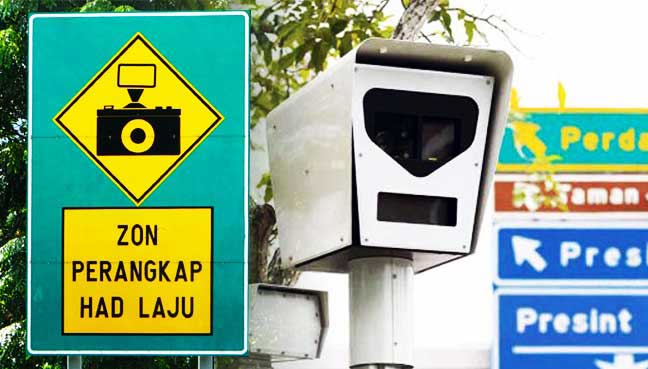AES is the way forward, says road safety expert, but it is just one part of the enforcement process.

PETALING JAYA: Five years after it was first introduced, the Automated Enforcement System (AES) is still being criticised by some social media users who say it is a way for the authorities to make money from road users who have trouble following road rules.
These critics would likely have been upset by news that the government is set to install another 100 AES cameras nationwide next year, and will probably be unhappy that Putrajaya is not stopping there.
In the interest of road safety and to prevent fatal accidents, against the backdrop of a growing population and increasing number of road users, the government will add more AES cameras from time to time, said Deputy Transport Minister Ab Aziz Kaprawi.

AZIZ KAPRAWI
To put things into perspective, as of 2016, there were a reported 27.61 million registered vehicles in the country. That same year, a total of 7,152 people died in road accidents – an increase of over 400 lives from 2015.
Speaking to FMT, Aziz said the main factor in road accidents was human error, stemming from the attitude of road users.
He said this is where the AES has proven effective, with fewer incidents of speeding in the areas where the 14 AES in operation are located.
He said what made the AES effective was its visibility, which is why the ministry wants more visible cameras in areas which record large numbers of accidents, commonly known as “black spots”.
These black spots, he said, include those on highways and at traffic lights.
Aziz said the government had no issue with mobile apps like Waze showing drivers where the AES cameras were because the point of the AES was to be visible so that motorists would always remember to mind their speed.
AES the way forward but…
Road safety expert Karen Goonting said there was no doubting the AES’ effectiveness, adding that research had proven that the system – which is also used in 90 other countries including the United Kingdom, Kuwait and France – helps reduce offences.
Road safety expert Karen Goonting said there was no doubting the AES’ effectiveness, adding that research had proven that the system – which is also used in 90 other countries including the United Kingdom, Kuwait and France – helps reduce offences.

KAREN GOONTING
A Malay Mail Online report previously noted that the mortality rate in France went down 27% in the first three years after the AES was introduced there, while in Kuwait, accidents went down 48% and in the UK, traffic violations decreased by 6%.
“The good thing about AES is that it makes motorists slow down at black spots,” said Goonting, noting however that motorists were bound to speed up again.
She said in Malaysia, research showed that the “good” driving habits motorists adopt when they perceive they are being watched only last for the next three kilometres.
“And that’s a good thing because when motorists know they’re being watched, they will slow down and this will help prevent accidents.
“It’s not about having a device to catch people speeding and fining them, but rather to reduce speeding.”
Goonting said the AES was only one part of a larger process, and that if subsequent action wasn’t taken against offenders, errant motorists may treat it as just another summons which didn’t need to be paid.
“What happens when people don’t pay? They may have their licences revoked, but after that what happens?
“The authorities must be able to track down those who don’t pay the fines and take the necessary action.”
AES allows JPJ to focus on other areas
The Road Transport Department (JPJ) says the additional 100 AES cameras will allow its officers to focus their efforts on other areas of road safety.
Speaking to FMT, JPJ director-general Nadzri Siron said with the AES, the department could reduce the manpower needed to monitor vehicles which were speeding, adding that the system also operated 24 hours a day.

NADZRI SIRON
“The AES will relay the information to us and we can take action against motorists who’ve committed an offence.”
Nadzri said the department’s manpower was still needed in other areas such as checking licences, road tax, patrols and operations.
“So now we can focus our manpower on other areas and perhaps in the future, there will be cameras which can detect those who overtake on double lines or use their handphones while driving.”
The AES, which was suspended shortly after its introduction, only made a comeback this April and was integrated with the Demerit Points System (Kejara) to become the Automated Awareness Safety System (Awas).
Under Awas, those caught by the AES for speeding face an RM150 fine, while those who overtake on double lines, run red lights, misuse the emergency lane and speed can have their licences suspended.
The AES was previously suspended after questions about its legality were raised, given that it was operated by civilian firms which would enjoy a share of the revenue from summonses.
Subsequently, the federal government acquired the system and said it would be implemented and expanded later on. -FMT


No comments:
Post a Comment
Note: Only a member of this blog may post a comment.